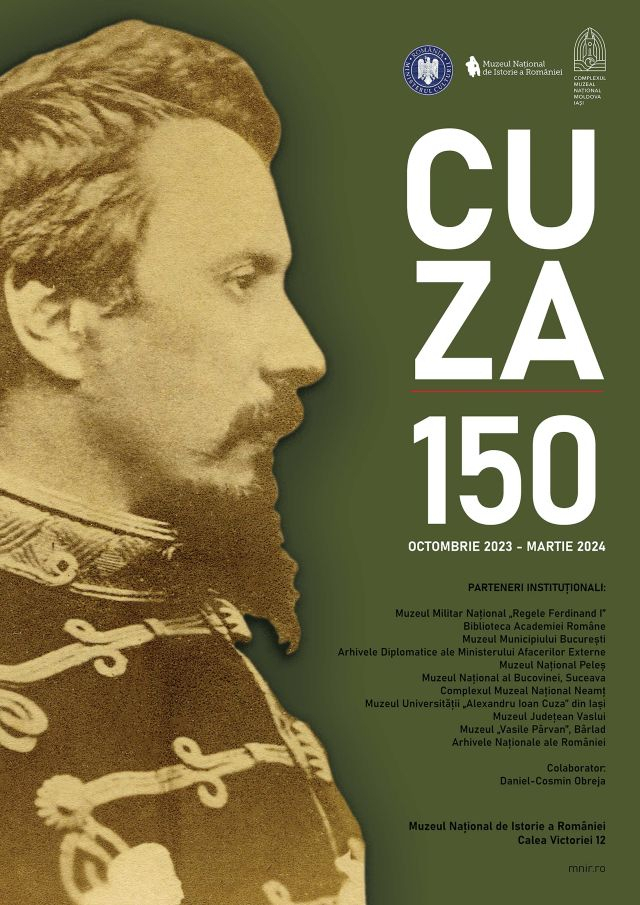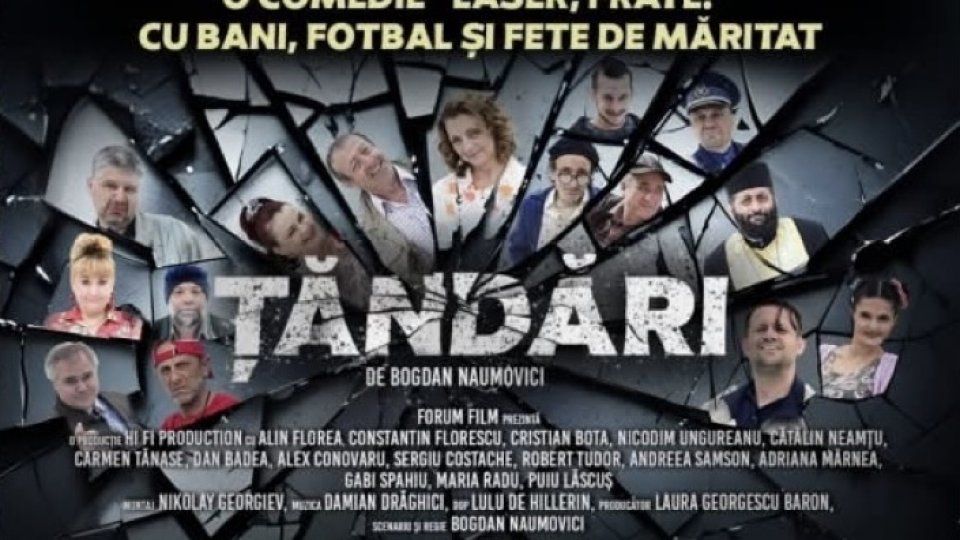The “Cuza 150” Exhibition
A commemorative exhibition providing insight into the life and career of prince Alexandru Ioan Cuza

Ion Puican, 06.01.2024, 14:00
In early October 2023, the
National History Museum of Romania (MNIR) hosted the opening of the exhibition
Cuza 150, marking 150 years since the death of prince Alexandru
Ioan Cuza (1820-1873). Cuza was the first ruler of the Romanian United
Principalities and of the modern Romanian state. A major historical subject of
both controversy and fascination, Cuza’s rule had a great impact on the
development of the Romanian state. Cornel Ilie, the deputy director of MNIR,
the curator of the Cuza 150 exhibition, told us more:
The exhibition obviously
celebrates 150 years since the death of Alexandru Ioan Cuza. Like I’ve said on
previous occasions, this is not just an exhibition about Cuza’s death. It
rather focuses on the life and activity of Alexandru Ioan Cuza. Therefore, for
us, Cuza 150 was an opportunity to bring Alexandru Ioan Cuza back
into the spotlight, given he is an iconic representative of our modern history.
His name is tied to a major milestone in Romanian historiography – the Union of
the Romanian Principalities, as well as to a series of events and actions with
a key contribution to the emergence of modern Romania. Our exhibition speaks
not only to Alexandru Ioan Cuza the ruler. Surely, parts of it focus on that,
but it also speaks to the man he was. At one point I actually considered
picking a different name for this exhibition, for instance Cuza, man and
ruler. Alexandru Ioan Cuza ultimately had all the makings of any man: a
man of many talents, certainly flawed, with weaknesses and passions of his own,
with an entourage made of people of greater or lesser quality, although with
equal influence on his rule. Therefore, everyone who visits the exhibition will
discover all these different sides of Alexandru Ioan Cuza.
Cornel Ilie also told us how the
exhibition approaches these two different personae: Cuza the ruler, the
politician, and the prince’s private life.
We tried to illustrate
these two sides by means of a series of heritage items, each telling a story,
for instance, about Alexandru Ioan Cuza’s family, his parents and rise to
prominence. They speak to who Cuza was before ascending to the throne, about
his diplomatic career, about his stellar military career, because Cuza is
portrayed in full military uniform in every instance of this exhibition. He is
never depicted in civilian dress, but always wearing military garb.
Cornel Ilie tells us more about
the items on display:
There are certain
symbol-objects, such as the two thrones of ruler Alexandru Ioan Cuza and his
wife Elena Cuza, thrones that had also been used by Charles and his wife
Elisabeth until 1881, when they were crowned King and Queen of Romania. Also on
display is the famous official portrait of Alexandu Ioan Cuza which we all know
from history books, painted by Carol Popp de Szatmari. A very interesting exhibit is the painting
dedicated to the Union of the Romanian Principalities, signed by Theodor Aman,
which is perhaps the most important painting dedicated to that historic moment.
We have tried to identify all the people in the painting, so that visitors
should know the names of all those who took part in this highly important event
in Romania’s history. The exhibition also includes objects that tell us, for
example, about the agrarian reform, which was very important not only because
it meant that peasants received land, but because it was a moment that
generated some very important changes in the political life of the country.
There are exhibits that remind of the establishment of the university in Iași
and Bucharest, the first two universities on Romanian territory. There are also
very interesting objects related to the implementation of the single weights
and measures system, given that up to that moment it had been a total chaos,
each province using different measurement units. Part of the exhibition are also
objects that remind us of the military reform and of the outstanding
achievements during Cuza’s rule, when a number of vital institutions for the
further development of the country were established. Among them are cultural
institutions, science academies, visual art institutes and the Institute of
Statistics, established in 1860, when the first census was conducted. The first
weapon ever made in Romania, at the Romanian Arms Manufacture, is also
displayed. Then there are exhibits that, as I said, tell us about Cuza’s
personal life, about the life of his wife Elena and their relationship and also
items that touch on taboo topics, such as the relationship he had with Maria
Obrenovici.
Cornel Ilie also told us his
personal opinion on the exhibition:
It is an exhibition that, I
believe, has a different approach from what others may have seen related to
Cuza before. It is an exhibition worth visiting also due to the fact that we
put together items collected from several museums in the country. I believe
people could better understand this complex and admirable historical
personality, by visiting the exhibition at the MNIR. (VP/EE)





























